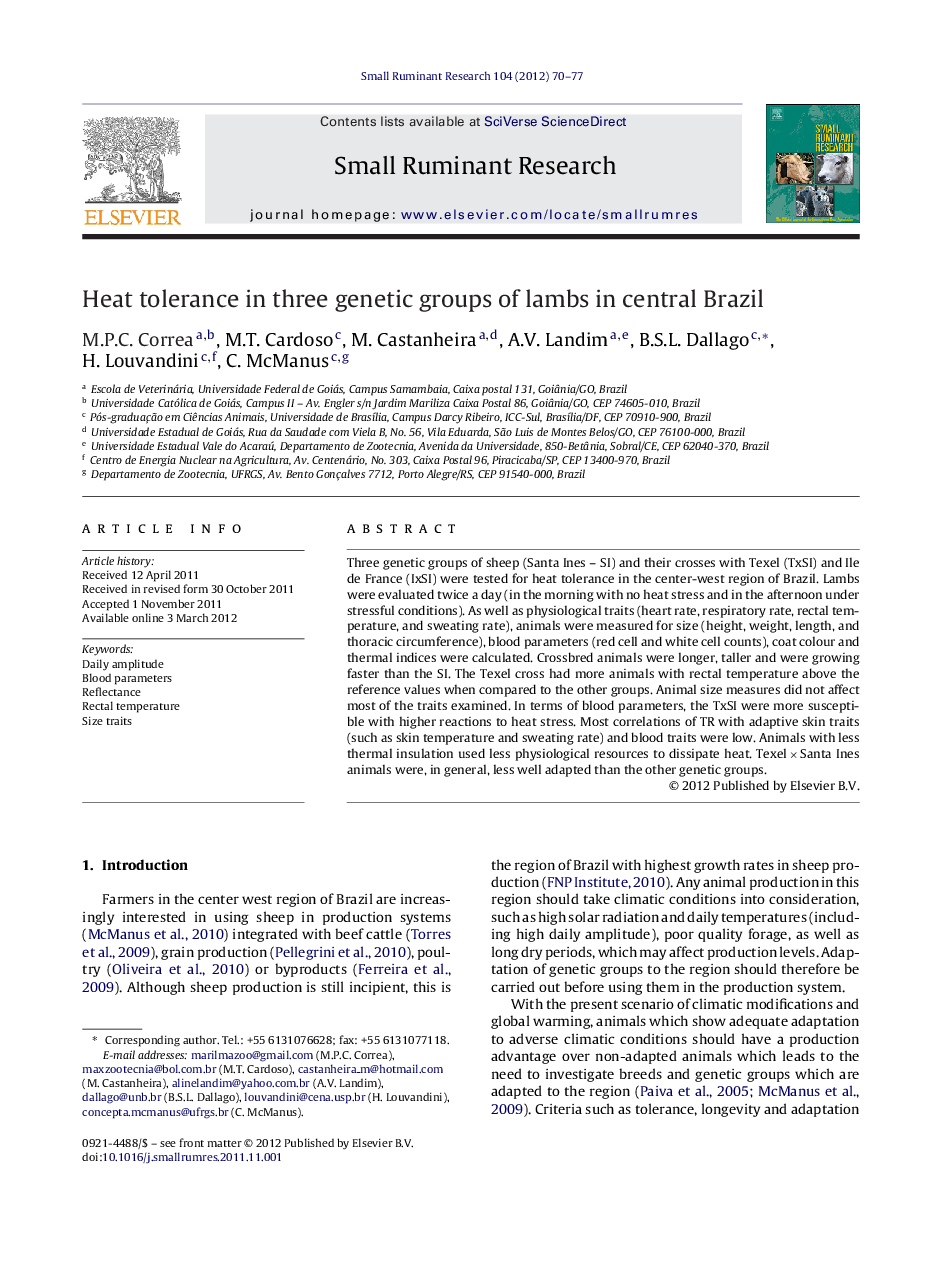| Article ID | Journal | Published Year | Pages | File Type |
|---|---|---|---|---|
| 2457225 | Small Ruminant Research | 2012 | 8 Pages |
Three genetic groups of sheep (Santa Ines – SI) and their crosses with Texel (TxSI) and Ile de France (IxSI) were tested for heat tolerance in the center-west region of Brazil. Lambs were evaluated twice a day (in the morning with no heat stress and in the afternoon under stressful conditions). As well as physiological traits (heart rate, respiratory rate, rectal temperature, and sweating rate), animals were measured for size (height, weight, length, and thoracic circumference), blood parameters (red cell and white cell counts), coat colour and thermal indices were calculated. Crossbred animals were longer, taller and were growing faster than the SI. The Texel cross had more animals with rectal temperature above the reference values when compared to the other groups. Animal size measures did not affect most of the traits examined. In terms of blood parameters, the TxSI were more susceptible with higher reactions to heat stress. Most correlations of TR with adaptive skin traits (such as skin temperature and sweating rate) and blood traits were low. Animals with less thermal insulation used less physiological resources to dissipate heat. Texel × Santa Ines animals were, in general, less well adapted than the other genetic groups.
